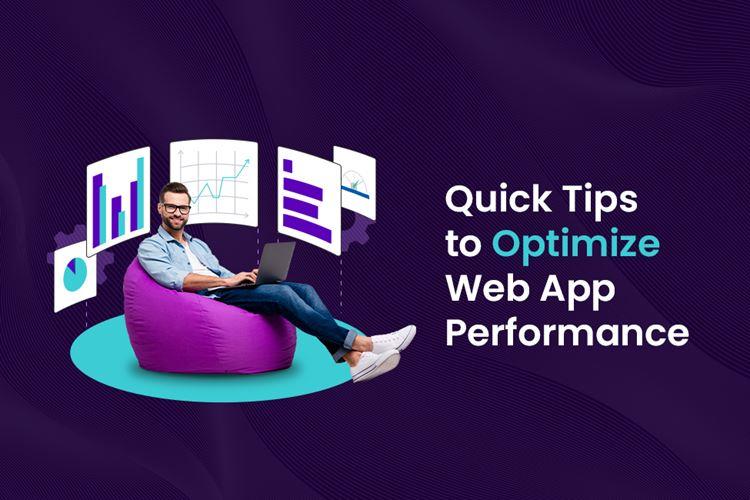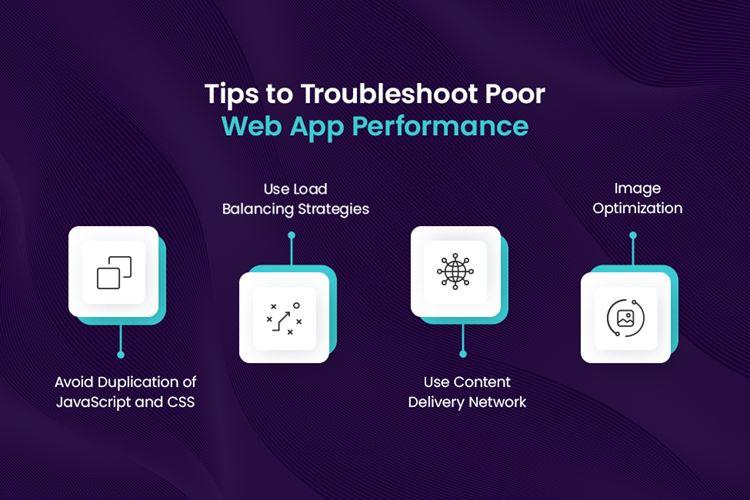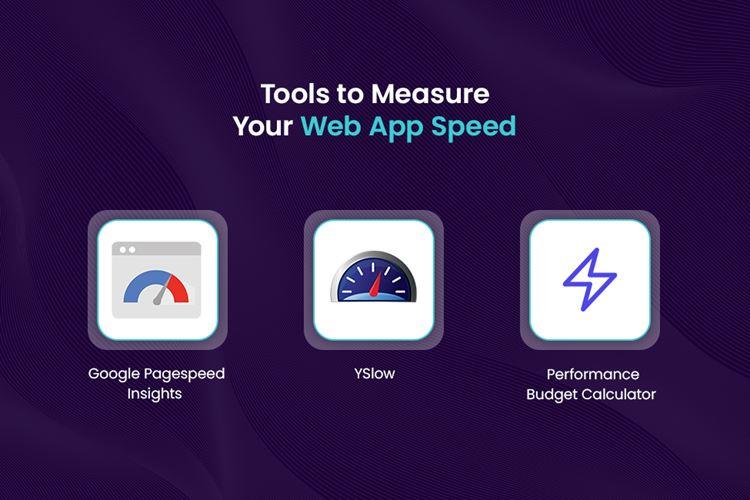
Technology is all about evolution, but one thing has always remained intact – the quality. If you focus on optimizing your web app performance, you can succeed well. But the question remains, “what are the parameters you should focus on to optimize your web app performance?” That’s what I am going to cover in this article.
How to Optimize Web Application Performance?
Did you know it takes about 0.05 seconds to give your visitors the first impression of your web app? But the good news is you can get these split second decision to your preference with a few web app optimization tips and techniques. Starting off with the categories, you must check these to improve your web app conversion rate.
- Page speed optimization tool.
- User experience optimization tool.
- SEO tools (there are sub-categories under SEO).
- Conversion rate optimization tool.
- Landing page optimization tool.
But what is the importance of these tools? Why do you need a good conversion rate and how can you make sure that your optimization technique works? This article will make sure it does! Let’s get an in-depth detail.
Tips and Tricks to Optimize Your Web App Performance
Get this straight; if the conversion rate is low the impact can be drastically degrading. Optimization should be one of the top most priorities for every business with a web app. Investment on a good web application development company is must-do. Here are a few more tips for troubleshooting poor web app performance.

Avoid Duplication of JavaScript and CSS
If a developer downloads duplicate JavaScript or cascading style sheet, there are drawbacks. It will, first of all, make the application slower. Worst of all, when they merge, they can cause unexpected behavior. And Google, in result, can turn down the app. And always remember, “Google only loves you when everyone loves you first.”
Use Load Balancing Strategies
The main intend of load balancing is to distribute the load of the web app between multiple app servers. For example, Facebook – there are several users online using Facebook at a time. To keep the browsing speed high pooling several servers has these days become and integral part of web app development.
Use Content Delivery Network
This is very similar to the point mentioned above, there are several content delivery network providers who serves static files from several servers that is geographically distributed. This too helps to eliminate application performance delay.
Image Optimization
Whether for website, web app or app if images are optimized it chucks down the loading speed. And the good news is anybody can compress and reduce the size of images online for free. It is better to not rely on your CSS to scale the images rather do (or ask your web app developers to do) it manually.
When everything is done correctly, or if you want to know if your web app needs optimization or notation, you can check that too. But how can you check your web app speed? Let’s dig into that.
How to Check Your Web App Speed?
Before planning to optimize your web app, check your current web app speed. This step will help you understand how much the optimization has helped. Speaking of which, here is how you can access your web app speed –

- Google Pagespeed Insights – It is a free speed check tool from Google that will run a performance test of your web app for free.
- YSlow – It will check your web app and tell you “Why it is slow” hence the name. It will give you a list of recommendations on how to improve the performance of your web app.
- Performance Budget Calculator – If you are looking for a guide to help you determine the type of content running on your web app, you are looking for a performance budget calculator.
But is that enough? After all, it is a competitive world and to be loved by Google, you need extra miles to go. So, what custom web application development services you should look forward to build web app that would ace in a competitive market?
Strategies to Optimize Your Web Application
If your web application development team can manage the below factors to optimize your application, you have a long way to go. These factors will guarantee your success not only this year and next, but beyond. Let’s look at the effective factors.
Google Algorithm: Navigating the Search Giant’s Preferences
In the vast expanse of the internet, the Google Algorithm stands as the ultimate judge, determining whether your web app will rise to the top or remain buried in obscurity. Like I said, if you need the affection from Google, you better be loved by others first. Keeping up with Google’s ever-evolving preferences is crucial for maintaining a strong online presence. Now, how to get into that?
First and foremost, read and read and never stop reading. Regularly update your SEO knowledge and stay attuned to Google algorithm changes. Focus on crafting high-quality, relevant content that adheres to the latest SEO guidelines. Remember, your web app’s visibility is directly proportional to how well you align with Google’s algorithmic requirements.
SEO: The Laying the Foundation for Success
Technical SEO has the potential to form the bedrock upon which your web app’s performance will rest. A well-optimized website structure ensures search engines can efficiently crawl and index your content. So, what are the important parameters to look forward to? Pay attention to factors like proper HTML tags, sitemaps, and schema markup. Mobile responsiveness is no longer an option – it’s a necessity, especially with the increasing use of smartphones and tablets. A technically sound web app not only pleases search engines but also provides a seamless experience for your users.
User Experience: Beyond Aesthetics
User experience (which we call UX in short) goes beyond aesthetics; it’s about creating a seamless and enjoyable journey for your visitors. A minimal and easy design (UI), self-explanatory navigation, and fast-loading pages contribute to a positive UX. The developers have to regular usability tests to identify pain points and areas for improvement. Prioritize responsive design to cater to users across various devices. Remember, a satisfied user is more likely to convert and engage with your web app.
Page Experience Update
Google’s Page experience update has shifted the spotlight onto user-centric metrics. Core Web Vitals, which include metrics like loading, interactivity, and visual stability, are now essential ranking factors. Optimizing these elements ensures that users not only find your web app quickly but also have a smooth and frustration-free interaction. Monitor your web app’s performance through Google Search Console and make necessary adjustments to meet the new standards.
Create Rich Snippets: Stand Out in Search Results
Rich snippets provide a sneak peek into your web app’s content, enticing users to click through. Implement structured data to highlight key information like reviews, ratings, and product details. Rich snippets enhance your search visibility, boost click-through rates, and establish your authority in your niche. Make your web app’s presence in search results not only informative but visually appealing.
Link Building: Building Bridges to Authority
In the intricate web of the internet, link building acts as the connectors between different nodes of authority. Secure high-quality backlinks from reputable sources to signal your web app’s credibility to search engines. Engage in guest posting, influencer collaborations, and content partnerships to expand your reach and establish your authority in your industry. Remember, it’s not just about the quantity of links; the quality and relevance matter significantly.
What is The Importance of Optimizing Your Web App?
You might be thinking, are all these worth it? Why it might be so important to optimize your web app. Well, here’s why:
- One of the primary advantages that performance optimization brings is an enhanced user experience. A network error-free and highly responsive application truly embodies a seamless user experience, a vital element in retaining users and keeping their engagement intact. Conversely, a sluggish and unresponsive application can trigger frustration, potentially leading users to disengage from the app.
- Another notable upside of performance optimization is the heightened efficiency it delivers. When an application is finely tuned for performance, it conserves valuable resources, resulting in swifter loading times, reduced server expenses, and extended battery life for mobile devices. This not only elevates the user experience but also amplifies the overall cost efficiency of the application.
- Crafting peak performance for a web or mobile application involves the adept use of various techniques by developers. Among these, a particularly potent approach involves curbing the volume of data exchanged between the server and the client. This can be achieved through data compression, downsizing images and multimedia files, and minimizing the count of HTTP requests, all contributing to a finely tuned user experience.
Conclusion
Optimizing your web app’s performance is a multidimensional endeavor that involves technical finesse, user-centric design, and a keen understanding of search engine dynamics. The amalgamation of Google Algorithm mastery, technical SEO prowess, superior user experience, adherence to page experience updates, rich snippet creation, and strategic link building lays the foundation for a successful and high-performing web app.
Get a good web app development company, and your web app will not only conquer the digital realm but also stand out amidst the sea of online competition. Remember, the road to web app optimization might be challenging, but the rewards in terms of user engagement, conversions, and organic visibility are well worth the effort.

I am Pratik Mistry, a rare mix of technologist and Executive Vice President in sales at Radixweb. My passion lies in helping companies to grow revenues by delivering top notch custom software development solutions and build value-based partnerships.